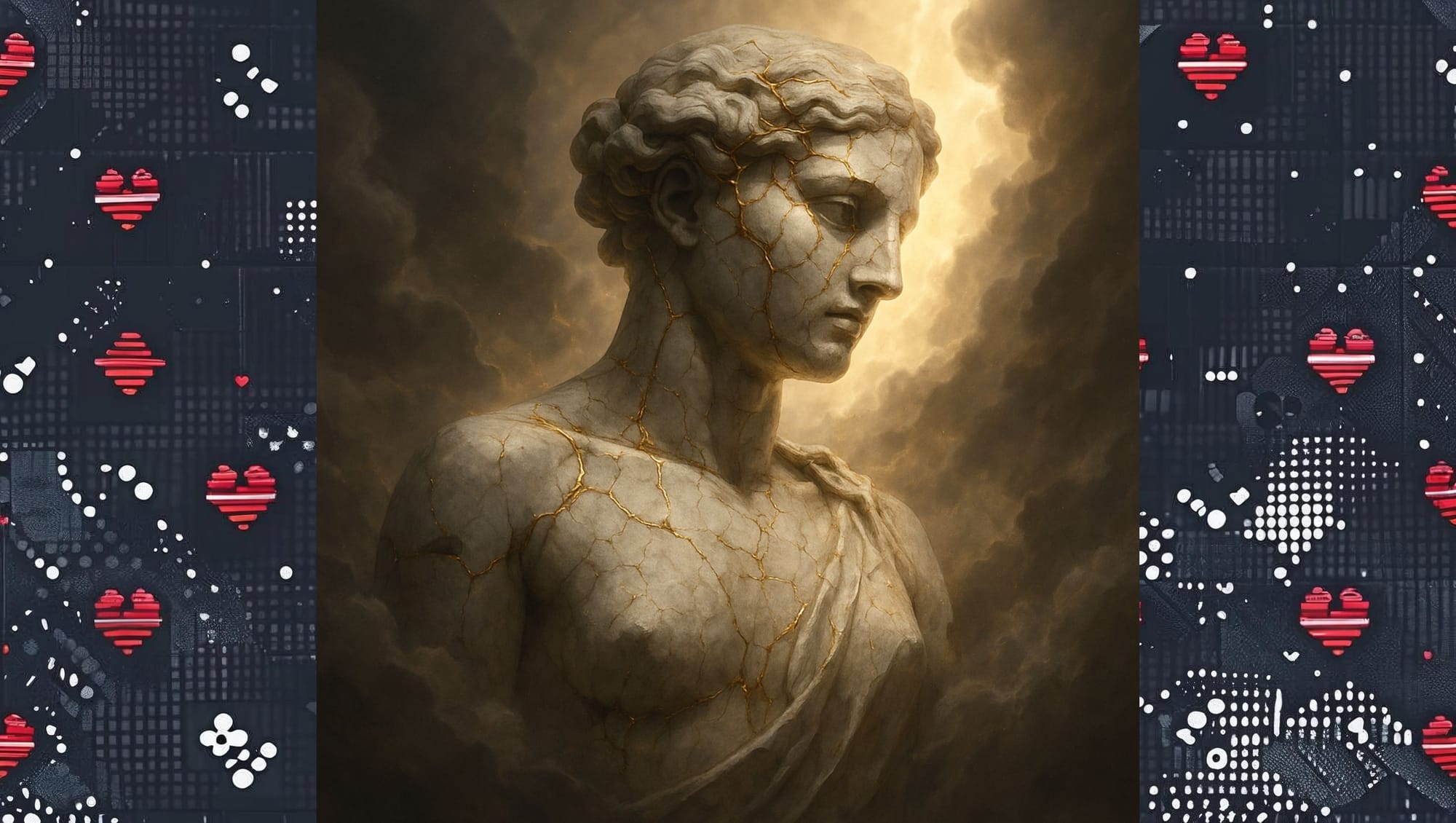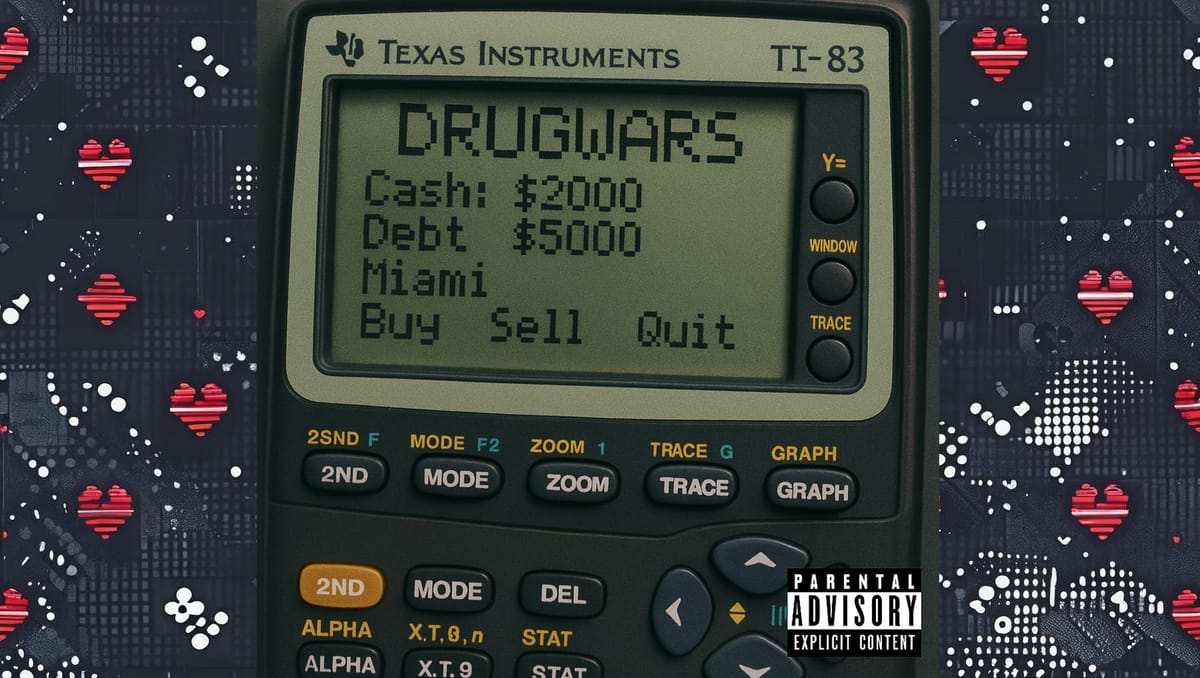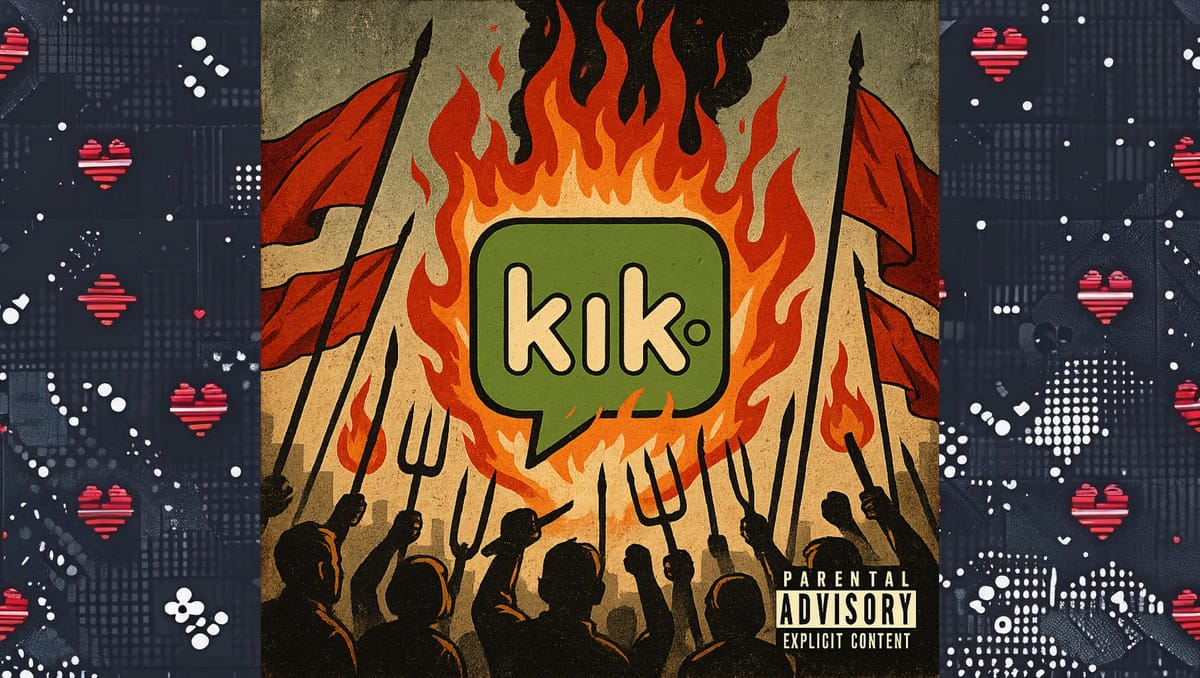How to Be Antifragile: The Art of Benefiting from Chaos

We grow up told that safety is success — plan carefully, avoid mistakes, keep everything stable. It’s the logic of insurance policies, HR manuals, and college counselors: minimize risk, maximize certainty. But in practice, that mindset produces stagnation. Caution becomes a civic religion, and safety the quiet killer of growth.
Nassim Nicholas Taleb’s Antifragile offers a different gospel. His claim is simple but radical: the people, systems, and ideas that truly thrive are the ones that gain from disorder. Volatility isn’t a storm to endure; it’s the weather pattern that feeds evolution. Stress and randomness aren’t threats to avoid — they’re the raw materials of resilience.
When the book came out, it was quickly adopted by trader bros and crypto libertarians who saw it as permission to gamble bigger. But the deeper truth of antifragility belongs to anyone living outside the template: founders building from chaos, artists who pivot instead of quit, couples designing new forms of intimacy, people who’ve learned that comfort is not the same as security.
If you’ve ever built something that only worked after it broke, or rebuilt yourself stronger after the hit, you already understand antifragility. Taleb just gave it a name and provided a framework for how to live it deliberately.
The Fragile-to-Antifragile Spectrum: Why Resilience Isn’t Enough Anymore
Taleb sketches a simple hierarchy. Fragile things shatter under stress. Resilient things resist it. Antifragile things get stronger because of it. A porcelain vase breaks. A rubber ball bounces. Muscle fibers tear, heal, and return thicker.
Most of us are trained to aim for resilience with the goal to hold steady through turbulence and return to baseline. That sounds healthy, even heroic. But resilience is still a defensive posture. It’s about protecting what you already have. Antifragility is different. It seeks out volatility, not for the chaos itself, but because adaptation happens nowhere else. It’s the difference between bracing for impact and learning to surf.
Modern life quietly conditions us away from that. The systems we grow up in, especially schools, workplaces, relationship scripts are designed to reward predictability. We’re told to pick one career path, one partner model, one version of ourselves and hold it steady. We insure, optimize, and schedule until there’s no room for stress to teach us anything. That’s how we end up resilient. It’s stable, dependable and boring.
Antifragility asks for a different, riskier approach: to treat shocks as data, to let volatility reshape you instead of merely surviving it. For an entrepreneur, that means embracing failure as tuition. For someone living non-monogamously, it means letting jealousy, novelty, and tension become teachers instead of threats. For anyone carving their own path, it means recognizing that stability often hides decay and that pressure, properly engaged, is what keeps a system alive.
The Philosophy Behind Antifragility: From Stoicism to Chaos Theory
Taleb didn’t invent the idea of gaining from chaos; he reconnected it to an older intellectual lineage of thinkers who treated disorder as essential, not accidental.
From Hume and Popper, he borrows skepticism about prediction. This is the idea that knowledge can never be perfectly certain, and that the future doesn’t have to rhyme with the past. From Heraclitus, he inherits the principle of flux: the river that’s never the same twice. Those serve as context. But the emotional and philosophical backbone of antifragility comes from two figures: Seneca and Nietzsche.
Seneca, the Stoic, saw volatility as a training ground for the soul. He practiced losing things before he lost them. He promoted fasting while rich and sleeping on the floor sometimes, not as self-punishment, but as inoculation. To him, fortune’s chaos was the curriculum. Taleb adopts that posture wholesale. To live well is to build systems that expect loss and still gain from it. The Stoic doesn’t suppress emotion or deny uncertainty; he rehearses both until chaos becomes familiar. Antifragility is that mindset formalized. It’s stoicism with math attached.
Nietzsche gave the philosophy its pulse. His obsession with becoming, with the self as a work perpetually in progress, is the existential twin of Taleb’s systems logic. “What does not kill me makes me stronger” isn’t optimism; it's the algorithm. It encodes the antifragile pattern: pressure → break → adaptation → transcendence. Taleb’s model is Nietzsche’s will-to-power in probabilistic form. It’s still growth through exposure and transformation through stress. Both reject safety as an idol. To live safely is to live small; to live fully is to court the chaos that forces reinvention.
Underneath the philosophy runs a mathematical skeleton. Taleb’s background isn’t psychology . It’s probability theory and physics. His models of fragility and antifragility borrow from nonlinearity, convexity, and chaos theory. In nature, small perturbations often trigger large, unpredictable effects. The same holds in human systems. Antifragile entities have convex payoffs which means limited downside relative to unlimited upside. While fragile ones are concave, exposed to ruin from small shocks. That’s why volatility strengthens one and destroys the other. In physical terms, it’s the same principle that governs evolution, weather patterns, and even markets: feedback loops in constant turbulence.
Where modern institutions build for control, Taleb’s framework builds for turbulence. He trusts physics more than policy. His is a worldview that assumes chaos, designs for it, and treats uncertainty not as a flaw in the system but as the system’s heartbeat. In MoneySexNerd terms, this is the beginning of the chaos dividend — the yield you collect from staying exposed to pressure instead of insulating against it.
How Antifragile Thinking Shaped Modern Finance, Tech, and Culture
Since Antifragile dropped, Taleb’s framework has spread far beyond the trading floor. What started as a theory of risk has become a quiet design principle for how the most adaptive people and systems now live.
In finance, antifragility became the new risk gospel. “Fat-tail” awareness (the idea that extreme events dominate outcomes) is now built into hedge-fund math and venture portfolios alike. But the deeper influence is psychological: the best founders and investors no longer chase predictability; they engineer exposure. They understand that concentrated bets, taken often and adjusted quickly, compound faster than cautious consistency.
In technology, antifragility is baked into the infrastructure of the internet itself. Bitcoin, open-source software, and decentralized networks grow stronger under attack. Every hack, ban, or exploit hardens their code and culture. The same principle drives the startup mindset: ship early, break things, learn faster than you fail. A system that can’t crash small will eventually crash big.
In medicine and human performance, researchers now model antifragility in biology. Muscles, bones, and immune systems need stress to thrive; too much protection breeds weakness. The concept of hormesis or small doses of harm that create long-term benefit has become mainstream in training, fasting, even mental health. Stress, dosed correctly, is medicine.
In organizational life, the antifragile company is replacing the resilient one. Startups and creative teams are designed to pivot, experiment, and absorb hits without collapse. Bureaucracies optimize for stability; antifragile structures optimize for learning speed. The result is a cultural Darwinism that favors motion over maintenance.
And in culture at large, antifragility has become an unspoken aesthetic. Online discourse, meme warfare, even non-monogamy all operate by similar logic: exposure leads to adaptation. Ideas, identities, and relationships that survive public stress become stronger precisely because they’ve been tested. Taleb’s “philosopher-trader” archetype now lives in entrepreneurs who experiment in public, artists who treat feedback as fuel, and communities that treat transparency as armor — the philosopher-operator in MSN language.
What unites all of these is a shift in posture. Fragile systems seek shelter. Resilient ones brace. Antifragile ones invite impact because impact is information. The more contact with reality, the faster the learning loop closes. That’s the edge where MSN lives: in the spaces where volatility isn’t a crisis to manage, but a curriculum to master.

Optionality and Skin in the Game: Building an Antifragile Life That Can’t Lose
Taleb defines optionality as the property of having more to gain than to lose from uncertainty. Fragile systems depend on one path and fear surprise. Antifragile systems multiply their options so that randomness becomes an ally. It’s not luck; it’s structure. Optionality means your downside is limited but your upside is unbounded. Venture portfolios, biological evolution, and good writing habits all share that shape: they survive failure through variety and compound strength through feedback.
Our parents were taught the inverse. One job until retirement, one marriage for life, one house, one pension. The culture of the twentieth century prized specialization, stability, and commitment — virtues that quietly produced fragility. Lose the job, the spouse, or the market, and the whole identity cracked.
Today, optionality is the native language of survival. The gig economy, the creator economy, and digital entrepreneurship all reward those who keep multiple plays alive. We build side projects, test platforms, diversify income, and adapt faster than institutions can plan. We date the same way — less as possession, more as iteration. Non-monogamy, open relationships, and looser relational structures aren’t moral rebellions; they’re behavioral antifragility. Each new connection or failure feeds information back into the system, refining how we love, communicate, and choose.
Optionality doesn’t mean chaos for its own sake.
It’s a design choice: expose yourself to small volatility so you never get wiped out by the big one. You take more swings, but you size them so none can ruin you. This is the Barbell Reality — the MSN adaptation of Taleb’s barbell strategy: one hand on the rail of safety, the other deep in chaos, nothing in the fragile middle. You live with both extremes: a steady floor and an open ceiling. It’s how entrepreneurs hedge risk, artists protect purity, and lovers stay free but anchored.
That logic only works, though, if you carry skin in the game which another of Taleb’s core principles. It means exposure to your own consequences. If you stand to gain from your choices, you should also stand to lose from them. Without that symmetry, feedback collapses and systems rot.
Taleb traces the phrase to ancient honor cultures: the Roman engineer who slept beneath his bridge so that collapse meant death, or Hammurabi’s law that punished the builder if his house killed the owner. Modernity has drifted far from that ethic. Our institutions are full of people who make bets with other people’s money, reputations, or lives. The CEO who outsources risk, the politician insulated from policy outcomes, the pundit wrong every night with no cost are all symptoms of a civilization allergic to consequence.
You recognize skin in the game now mostly by its absence. But the value still survives in subcultures where honor and exposure are inseparable. Entrepreneurs who sign their own checks. Kink communities built on radical consent and accountability. Hip-hop’s street-to-studio ethos all share the rule that your credibility lives or dies with your word. These are antifragile microcultures: systems that stay real because feedback is immediate and public. This is what MSN calls the skin tax — the unavoidable price of authenticity. You pay it every time you choose contact over comfort.
Optionality gives you flexibility; skin in the game gives you integrity. One keeps you moving, the other keeps you honest. Together, they form the architecture of antifragility — a life built to learn faster than it breaks.
The Small Fires Principle: Why Controlled Failure Prevents Collapse

Taleb’s metaphor of the forest fire is one of his clearest. In nature, small, frequent fires clear deadwood and return nutrients to the soil. Suppress them too long, and the underbrush piles up until a single spark ignites catastrophe. Systems that are denied stress become fragile; they accumulate risk instead of releasing it. Antifragile systems prefer the burn of small losses that prevent collapse.
This pattern shows up everywhere. Markets that never correct eventually implode. Immune systems overprotected from germs attack themselves. Relationships that avoid conflict explode later in resentment. Each depends on stress as feedback. A good system metabolizes pain.
Modern life, though, has been built to suppress small fires. We’ve engineered safety into everything: financial bailouts, HR policies, polite communication. We smooth volatility until the system can’t breathe. But what looks like peace is often pressure deferred. When a shock finally arrives, it isn’t cleansing. It’s catastrophic.
The antifragile life, by contrast, builds in controlled burns. Entrepreneurs learn to fail small and often so they don’t fail once and fatally. Polyamorous or non-traditional relationships use honest conflict and transparency to keep energy moving before resentment calcifies. Artists and creators who share work publicly take micro-hits of feedback instead of hiding until “ready.” In each case, friction is maintenance and the controlled burn that keeps the system alive.
Taleb’s small-fire logic isn’t an endorsement of chaos; it’s a blueprint for how to stay alive in complex systems. You let tension release early and often so it never becomes fatal. Whether you’re managing a company, a relationship, or your own psyche, the principle is the same: suppress nothing essential, and let what burns, burn.
Antifragility in Complex Systems: How Technology and Culture Evolve Through Stress
Taleb’s later work grounds antifragility in biology and physics. Systems grow stronger when stress is distributed and information can circulate freely. In mathematical terms, it’s called convexity which is the condition where small shocks produce more upside than downside. Bones, muscles, and immune systems all work this way. They need pressure and exposure to stay alive. Protect them too much and they decay. The same holds for organizations, cultures, and networks.
Technology has become the modern laboratory for that principle. Platforms evolve exactly like living systems: through stress, iteration, and selective pressure. Every outage, exploit, or public backlash acts like a mutation test. Decentralized networks such as Bitcoin or open-source ecosystems embody antifragility. Each attack or failure forces adaptation, creating a codebase and a culture that can’t be killed by a single point of failure. Centralized hierarchies, by contrast, are digital monocultures. When one part fails, everything does.
Social hierarchies show the same pattern. Legacy institutions such as universities, media conglomerates, and traditional corporations behave like overprotected species. They suppress volatility, centralize control, and treat dissent as infection. The result is predictability that masks decay. Newer ecosystems like creator economies, startup communities and niche subcultures distribute stress and reward feedback. They grow through small losses: canceled projects, public criticism, messy transparency. Each failure becomes data that strengthens the whole.
Even the way status now circulates online follows antifragile math. Influence is no longer inherited; it’s stress-tested. Algorithms, audiences, and cultural backlash are constant volatility. Those who survive it adapt faster. Those who try to engineer perfect stability fade.
Taleb’s lesson from biology applies directly: monocultures die; ecosystems endure. Add what MSN calls Lindy Time — the filter of endurance. The longer something has lasted, the more likely it is to last longer still. Fragile things die fast; antifragile things age in reverse. Lindy Time is how culture and technology self-select for truth. It’s why open protocols outlast closed systems, why archetypes beat trends, why lived principles outcompete moral slogans.
Lindy Time.

An antifragile life or network, or brand depends on biodiversity of exposure. You spread risk across platforms, projects, and identities. You let friction teach you faster than comfort ever could. That’s the biodiverse identity in practice: survival through multiplicity.
Becoming Antifragile: How to Stay Real in a Consensus-Driven World
Taleb’s concept was never just about markets or medicine; it was a map for the individual. His real provocation is that people are systems too — living feedback loops of stress and adaptation. And in an age that treats friction as pathology, that’s almost heretical.
We live in a consensus-driven society that prizes smoothness above all else. Institutions reward compliance. Algorithms reward predictability. Even the language of self-improvement has become a soft cage: regulate your emotions, manage your triggers, find balance, avoid toxicity. It’s a therapeutic vocabulary built to protect the collective from intensity — a social immune system that interprets difference as disease.
But antifragility runs on the opposite physics. It doesn’t seek equilibrium; it seeks calibration. It says the peaks and valleys are the point. The volatility in your temperament, your work, your relationships — that’s where your edge lives. Clinical culture calls it dysregulation; corporate culture calls it unprofessional; polite society calls it too much. Yet everything genuinely original, erotic, or visionary in human history has come from the people who refused to sand down their edges — what we’ll call the spiky self, the person who treats intensity as signal, not symptom.
The antifragile self isn’t about comfort or coping. It’s about building a structure that can metabolize intensity instead of suppressing it. That means cultivating depth over likability, tension over peace, truth over social approval. It means refusing the algorithm’s flattening of identity, the pressure to be median, digestible and optimized. Antifragility is a call back to asymmetry, to the parts of us that still register risk and respond with invention.
The fragile person seeks consensus. The antifragile person seeks contact with friction, with consequence, with the real. They understand that every breakdown, every contradiction, every time life refuses to fit the script is information. You don’t heal by removing volatility; you heal by giving it form. That’s how you collect your chaos dividend — every scar a receipt for growth.
The Antifragile Ethos: Why the Future Belongs to the Unbreakable Few

Antifragility, at its core, is a defense of aliveness. It is the refusal to trade vitality for predictability. Taleb built his language out of statistics and physics, but what he was really describing was a posture toward existence: a willingness to stay in contact with reality even when it burns.
Modern life keeps offering us smoother versions of ourselves — optimized, medicated, risk-managed, brand-safe. We are surrounded by systems that round off variance and sell it back to us as wellness. Corporate structures prize “fit.” Algorithms reward sameness. Therapists and coaches, often with good intentions, teach emotional regulation until passion itself looks like a malfunction. The result is a culture that confuses calm with health and consensus with truth.
Antifragility is rebellion against that flattening. It insists that the very things we’re told to suppress like stress, contradiction, conflict, volatility, desire and failure are the materials of strength. The antifragile individual doesn’t seek peace; they seek precision. They treat chaos as a training partner, not an enemy.
This is the MoneySexNerd ethos: live with Barbell Reality — one hand on stability, one reaching for the storm. Accept the Skin Tax that comes with exposure; it’s the only currency that buys credibility. Build a Biodiverse Identity so no single failure can define you. Let Lindy Time filter what’s real because what survives, deserves to. And defend the Spiky Self, the part that refuses to be sanded down by consensus.
To live antifragile is to let the world press against you and stay present enough to metabolize it. It’s to build a self that learns faster than it breaks, to collect your Chaos Dividend instead of hiding from volatility. It’s to stop negotiating your depth with the herd and to trust that the scars are proof you were here for the whole thing.
The antifragile person doesn’t chase safety; they chase contact. They don’t aim to avoid pain; they aim to transmute it. They understand that chaos isn’t the opposite of meaning — it’s the crucible where meaning gets made.
And that’s where MoneySexNerd plants its flag: the future belongs to those who can handle pressure, who thrive in noise, who can love, build, and think without insulation. Fragile people curate comfort. Antifragile people cultivate scars — not because they crave damage, but because the scar is the mark of contact, of participation, of life itself.



